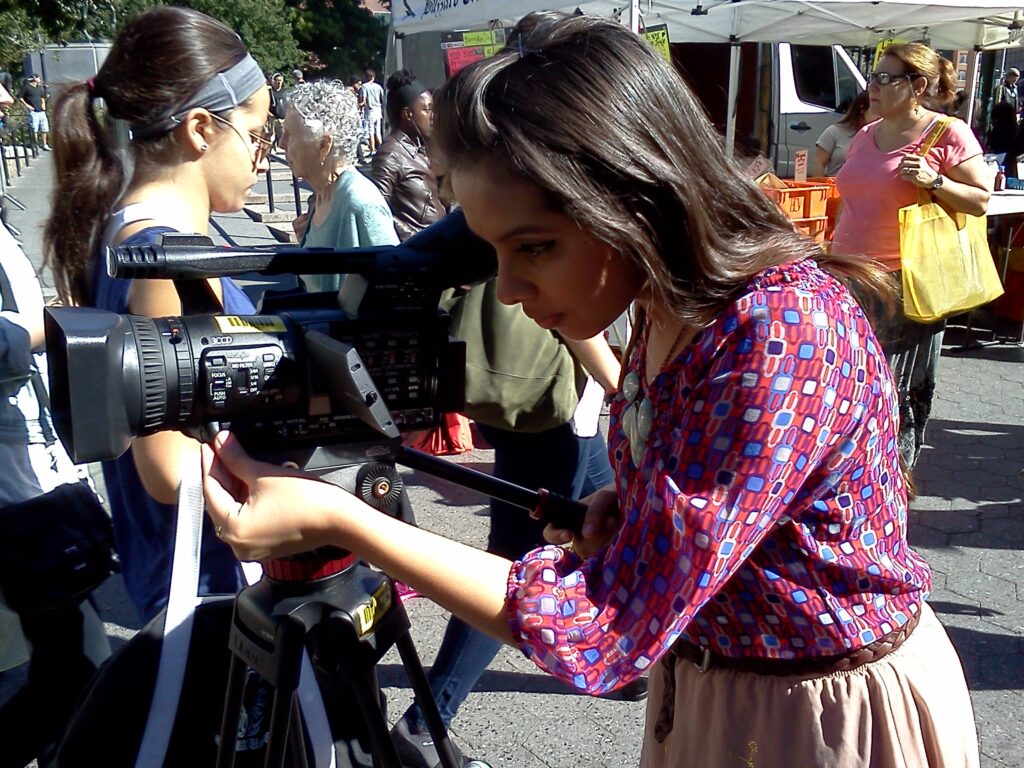
As a successful broadcast journalist, with more than 25 years of network television experience, I’m accustomed to seeing New York Film Academy students shooting throughout Manhattan. Now, as the new Chair of the Broadcast Journalism department, I’m learning a lot about who those students are and why they chose to attend NYFA.
There is no “typical” Broadcast Journalism student. They are a remarkably diverse group, with many holding undergraduate degrees. They discovered that they needed to enhance their hands-on production skills, in order to succeed in a highly competitive job market.
While many want to pursue careers in network or local news, others are interested in sports, entertainment or fashion programming. Some want to take the skills they have honed at NYFA and start their own media outlets, a prospect now possible thanks to the growing influence of online program distribution.
Roughly half of the participants in the Broadcast Journalism program are international students. They quite literally come from around the world. Some are staff members at well-known national broadcasting companies. They enroll in NYFA to learn the “state-of-the-art” in digital journalism. Often they find out about us from colleagues who used experience they gained at NYFA to advance their careers back home.
Once broadcasters hired young people for so-called “entry level” jobs, positions that afforded the opportunity for on-the-job training. By and large, those jobs don’t exist anymore. Today you have to be ready to work on day one, and the successful applicant is someone who can demonstrate superior hands-on skills before they are hired.
That’s where graduates of the NYFA Broadcast Journalism program shine. They have already built their own “demo reel,” with stories and segments they researched, shot, wrote, edited and narrated themselves. This includes students taking both the 4-week and 8-week Broadcast Journalism courses.
Students enrolled in the one-year program are able to study and practice in-depth production techniques. This includes working on all aspects of NYFA’s own, studio-based newscast. It’s a learning experience that has the look and feel of a nightly news program. The deadlines are real and so are the challenges.
All of this takes place in New York City, a global hub for politics, government, culture and the arts. Everyday news is made in New York, and the impact of that news is felt worldwide. NYFA students live and work in a fast-paced environment that offers once-in-a-lifetime possibilities right on their doorstep.
One of the key skills our students learn has nothing to do with cameras, editing software, Teleprompters or video switchers. Instead, it is a process. At NYFA, students learn how to collaborate with others. On-the-job, it is common to work with people from different backgrounds, different specialties, different outlooks and different opinions. NYFA Broadcast Journalism graduates experience that firsthand.
The ability to work as part of a team is essential to success as a broadcast journalist. I have seen that time and time again, working on assignments throughout the United States, Europe, South America and the Asia-Pacific region.
I’ve also seen the profound impact experienced mentors can have on the careers of young journalists. The staff at NYFA includes award-winning journalists with extensive national, even international production credits. They enthusiastically share this knowledge with their students, providing unique insights and perspectives.
Students graduating from the NYFA Broadcast Journalism program aren’t just ready for the “real world,” they are also prepared to change it.
– Bill Einreinhofer, Broadcast Journalism Chair